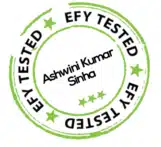
In the landscape of electronic devices, microcontrollers play a pivotal role in processing sensor data and executing programmed functions.
However, the cost of the microcontroller often constitutes a substantial portion of the device’s overall cost.
Traditionally, the integration of microcontrollers into electronic devices has been a substantial contributor to the Bill of Materials (BoM) and consequently the overall cost of the product.
Also Read: Microcontroller Vs Microprocessor
Devices ranging from game pads and electronic controllers to sophisticated robotics often demand microcontrollers with a hefty price tag, frequently ranging from 200 to 300 Rupees.
This financial barrier has limited the accessibility of advanced technology to a broader audience.
Enter the CH32V003F4U6 RISC-V microcontroller, a game-changer in cost-effective system design. Priced at a modest 12 to 20 Rupees, this microcontroller not only significantly reduces the cost associated with the heart of the system but also paves the way for innovative solutions where cost efficiency is paramount.
The project aims to reduce costs associated with the microcontroller, which typically comprises a significant portion of the Bill of Materials (BoM).
Through the integration of RISC-V architecture, this system provides an efficient and cost-effective solution for designing devices, such as induction heaters, while maintaining affordability under 100 Rupees.

RISC-V Chip Board – BoM

Power System Design
According to the datasheet, the chip works within the voltage range of 5 to 3.3V. So here we designed the Voltage regulation system using LM1117 with two capacitors to power the system and provide a regulated power supply of 3.3V.
The voltage regulation circuit consists of the LM1117 voltage regulator, two capacitors, and the CH32V003F4U6 microcontroller.
The LM1117 is connected with its input pin to the unregulated voltage source and its output pin to the microcontroller, providing a stable 3.3V output.
Capacitor Configuration:








